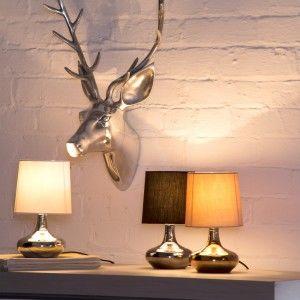Learn how to create a functional and beautiful lighting plan with our step-by-step guide to lighting schemes.
When decorating a new room or updating an existing one, there are many things to think about, from the colour scheme to floor coverings, furniture and accessories. Lighting is often a last minute after though that is overlooked.
However, lighting is an essential element to successful home decor. Lighting can create a mood and dictate the feel of a room. It can even affect how the colour scheme of a room looks.
Relying on one source of lighting in a room may be the easiest option, but adding different elements of lighting creates more a flexible and versatile room that works for every need. Taking time to consider your choice of lighting can make a huge difference to the look and feel of your home. A successful lighting plan can really pull together a room and make it feel like a home.
Illuminate your room with layered lighting in 3 steps
When thinking about lighting, function is important. Each room in the home is used for a variety of different tasks. The living room, for example, is used for watching TV, reading a book, doing homework and relaxing. The kitchen could be used for cooking and cleaning or intimate family meals. Each of these tasks needs a different level of illumination.
The key to a successful lighting plan is through layered lighting. Layered lighting combines general ambient lighting with focused task lighting and soft accent lighting to maximise the appearance and functionality of the room.
Step 1: Ambient lighting

A successful lighting plan starts with a background of ambient lighting.
Also known as general lighting, ambient lighting is the foundation to a lighting plan and provides a room with overall illumination. This layer should provide the majority of light across a wide space. Ambient lighting is fundamental to a home as it creates a comfortable level of brightness that allows you to see and walk around safely.
In the home, ambient lighting is usually provided by a central source of
ceiling lighting. Depending on your room and the look you want to achieve, this can come in the form of ceiling pendants, chandeliers and recessed downlights.
Ambient light should provide an even level of light that is suitable for everyday life but not too bright.Why not enhance your ambient lighting with a dimmer switch, which allows you to switch between full ambient lighting and soft mood lighting.
Light fittings to use: ceiling lights, pendant lights, flush and semi-flush lights, light shades, recessed downlights
Step 2: Task Lighting

The second layer of lighting, task lighting increases the functionality of a room. Task lighting provides focused illumination for specific activities such as reading, writing and cooking. Good task lighting allows you to see more clearly and prevents eye strain.
Task lighting should be the brightest light in a room. Table and desk lamps are great sources of task lighting, as well as ceiling spotlights and wall mounted spotlights. Place
adjustable lamps by a sofa or at the side of the bed or a desk lamp near a work area for a focused reading light.
In the kitchen, you need clear task lighting over work zones.
Spotlights and downlights can be placed above prep zones, kitchen hobs and sinks to provide focused illumination. In the bathroom, place spotlights near the mirror for adequate lighting when shaving or applying makeup.
When planning your room, think about the location of task lighting and where you will need it most. Adjustable task lights are a great idea as the light can be directed to different areas as needed.
Light fittings to use: Table lamps, desk lamps, ceiling spotlights, wall spotlights
Step 3: Accent Lighting

To finish off your lighting plan, the final step is accent lighting. A layer of accent lighting can be used to highlight or focused attention on a specific area of a room and bring texture, focus and warmth to a space.
Accent lighting can be used to highlight decorative features and key elements of your interior by drawing the eye to them. For example,
spotlights can be directed towards shelves of ornaments, books and photos, or picture lights can be used to highlight pieces of wall art.
It can also be used to highlight and draw attention to certain areas of a room, such as a seating area. Highlighting a corner with accent lighting can help to make a room look bigger. Place table lamps and
floor lamps around the edges of a room to radiate light inwards and create a cosy look.
Accent lighting should be brighter than ambient lighting but not as bright as focused task lighting. It can be achieved with wall lights and recessed ceiling lights.
LED strip lighting can be placed along shelves or inside cabinets for a creative source of illumination.
Think about the location of accent lighting and how it can complement the main ambient lighting in a room. The key to successful lighting is to have a well lit room with areas highlighted by extra pools of light.
Accent lighting is the perfect finishing touch to a room.
Light fittings to use: Wall lights, wall sconces, table lamps, recessed downlights, LED strip lights
Find our more about lighting each room in your home with our buying guides below:
A guide to living room lighting
A guide to kitchen lighting
A guide to bathroom lighting

